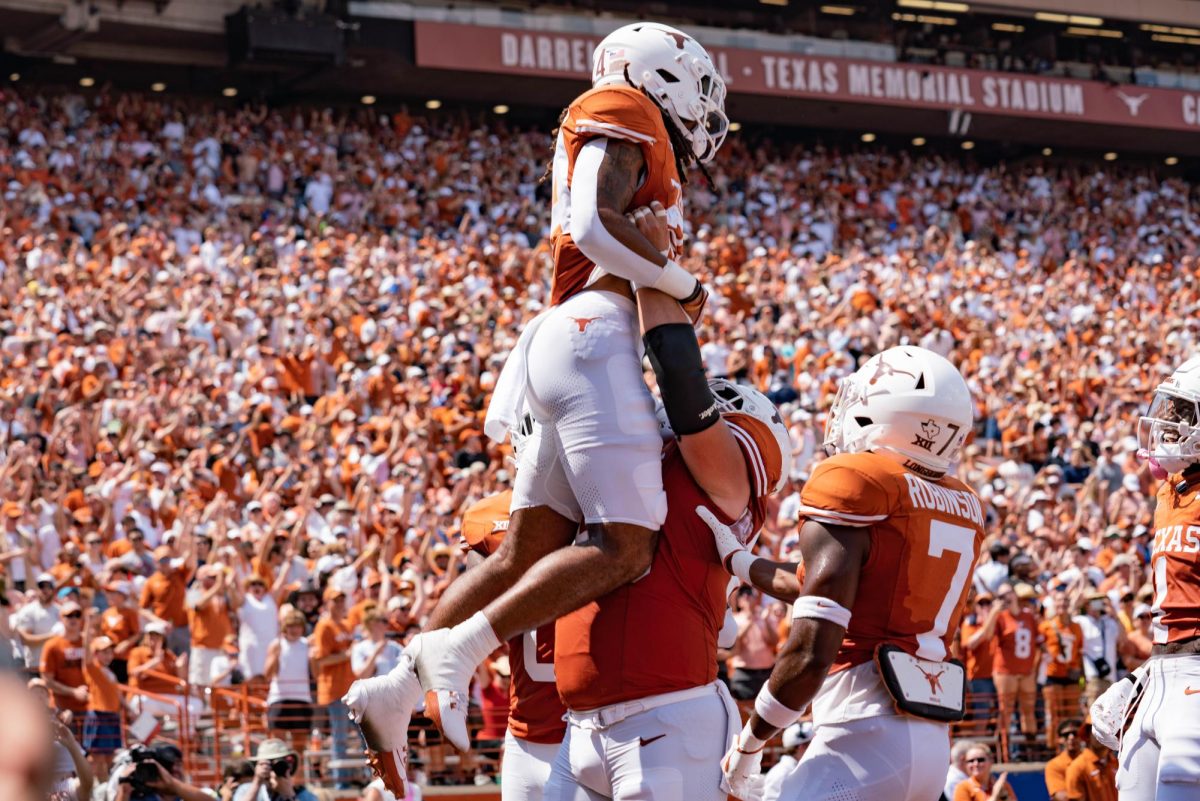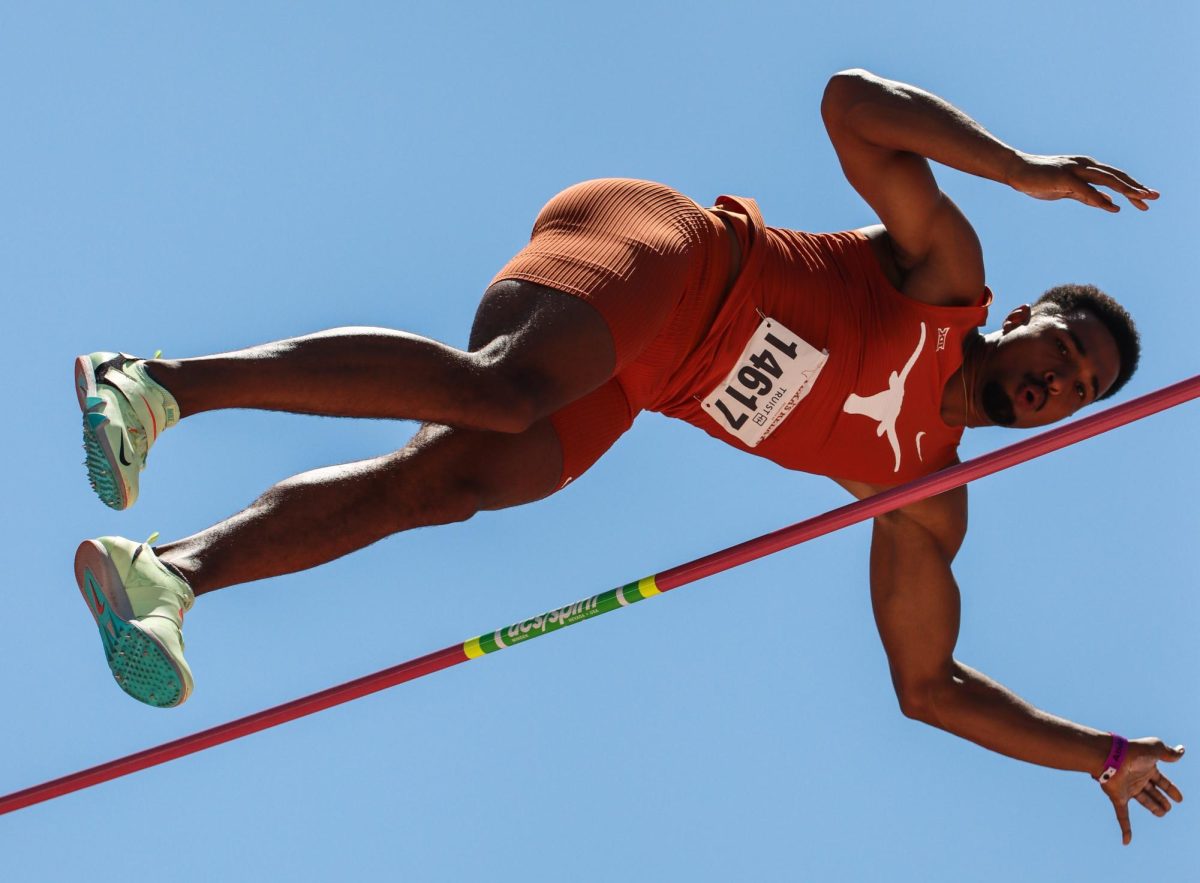The Daily Texan sat down with associate professor Ben Carrington to discuss a variety of topics, including UT’s slow integration process to the Rooney Rule, to what the University athletic department can do to separate itself as a beacon of diversity. Carrington’s research interests include the politics of race and sport, African diaspora studies, masculinity and national identity formation and the nature of cultural resistance within the arena of popular culture. He is the author of “Race, Sports, and Politics: The Sporting Black Diaspora.”
The Daily Texan: UT didn’t integrate its athletics until the late ’60s, although integration became a norm in universities across other parts of the country in the 1930s. Why do you think UT was so reluctant to jump on the trend, if not for anything, but to increase competition?
Ben Carrington: The answer is linked to questions of identity. Especially in parts of the South and Southwest, men’s football teams were seen to be the embodiment of the University. Often, these big state universities are the embodiment of the state identity itself, and they wanted to project the image of what it meant to be from say Alabama, Tennessee and of course, Texas. These states envisioned themselves as white spaces. Therefore, with more integrated teams and all the changes that were taking place in the ’50s and ’60s in society, football was seen as sort of the last bastion or last space of white privilege. It was an attempt to hold to a mythical, nostalgic notion of white Southern identity, and because of the important role of the football team as the social identifier, the entry of black athletes into those spaces wasn’t a question of ability of skill.
DT: You’ve mentioned the way black athletes have been described historically, has that changed as society has progressed?
Carrington: People are less likely to use the same type of overt descriptors that you would have seen in the ’50s and ’60s. It highlights the central contradictions to why these changes came about in the latter half of last century. I would suggest that those powerful myths that begin to emerge in the 20th century that ‘produce the idea of the natural black athlete’ are still alive today. There is a tendency for sports writers and commentators to talk about white players being able to ‘read the game,’ being intelligent. They tend to used cognitive descriptors of the white athlete working hard to get to where they are, and that their success is down to their intelligence, whereas sports commentary tends to focus on gifts of natural speed or strength when talking about black athletes. In the ’60s and ’70s, black athletes were compared to animals. They were “fast as cheetahs” and “jump like monkeys.” You obviously tend to see that less today, because people understand the connotations of comparing black people to animals. That overt framework has changed today, but it still manifests itself quietly.
DT: Shifting gears to Texas itself, how do you think the university has done in progressing past its racially charged history?
Carrington: I think it’s a complex picture, because we tend to focus our attention mostly on football, men’s basketball and maybe occasionally baseball. But if you look at athletics as a whole, it’s worth pointing out that most of the students that engage in sporting activity here are white. So it really depends on what sports we are looking at. The encouragement is that there is a shift from the mentality of the ’60s — that notion that black players can’t play football, for example, doesn’t exist anymore. The dangers though, is that we end up reinforcing stereotypes by thinking if we recruit black football players we’ll have the better team, because of the notion that they are naturally better at football. To me, we can say UT has really moved on when it hires a head black football coach. If you want to talk about a symbolic moment, I think UT’s football team being headed by a well-paid, well-qualified black head coach is the day we can really say we’ve changed. Also, that head coach would need a chance to prove himself. If that coach can lose five times straight to OU, twice by record losses, still have his job and then go on to success, is the time you’ll see that UT has moved on. The problem with many athletic departments across the nation is that there is a white power structure. A white athletic director hires a white head coach and then there are some black assistants who can recruit black players. It’s not easy to break into that top level role. It’s disappointing to look at the number of black head coaches in college football as compared to NFL where they’ve implemented the Rooney rule. It’s clear that it’s helped change the perception of the black head coach. College football has been very slow to adopt something like this.
DT: Texas A&M, a school with a noted conservative history, hired a black head coach this year as they transition to the SEC. What are your thoughts on that? Is this an indictment against UT, or a huge step forward for Texas A&M, or is something that we just have to wait play out before we deem it anything?
Carrington: I think time will tell. The evidence seems to suggest that black coaches are hired after white coaches, even when their CVs are better, and if there is any downturn in performance of the team, they tend to get fired sooner than white coaches, and that’s the key thing for me. People will say “Oh, we gave this minority candidate a chance, but they just aren’t good enough and we gave him two years, and he didn’t produce.” The example of Mack Brown is a good one. If you look at the time it took him to win a national championship from the time he was appointed, the numbers of years UT lost straight to OU by huge margins, if we are in a situation to give a black head coach or a minority head coach the time to prove themselves then that’s a positive step. There at least needs to be a recruitment process where these candidates are screened so someone can analyze whether or not they are qualified, but the case is that they are just often ignored or overlooked. I mean a few years ago, UT was already thinking that eight years down the line, the best coach for UT football would be Will Muschamp. So they appointed someone on the inside, for a future opening which is quite incredible, but he obviously left anyway. Hopefully, maybe the athletic department will look around and they will make manifest their espoused commitment to diversity.
DT: What change can sports as an entity do to affect change or become an agent for it?
Carrington: It doesn’t have an essence that suggests it can break down barriers or increase barriers. But because of that I think it’s important because we can go both ways with this. There was a comment I read some while back, where a senior profile UT athletic director said something like, “We aren’t keeping up with the Jones’, we are the Jones.’” It can be read as quite an arrogant statement, but let’s take that as being the case. That means we can perhaps introduce changes and policies that could be a beacon for what a progressive, diverse athletic department would look like. People would stop associating UT as the last team to win a championship with all white players and say UT was the first to win championships with minority head coaches.
Printed on Thursday, May 3, 2012 as: Diversity still slow to come at UT















